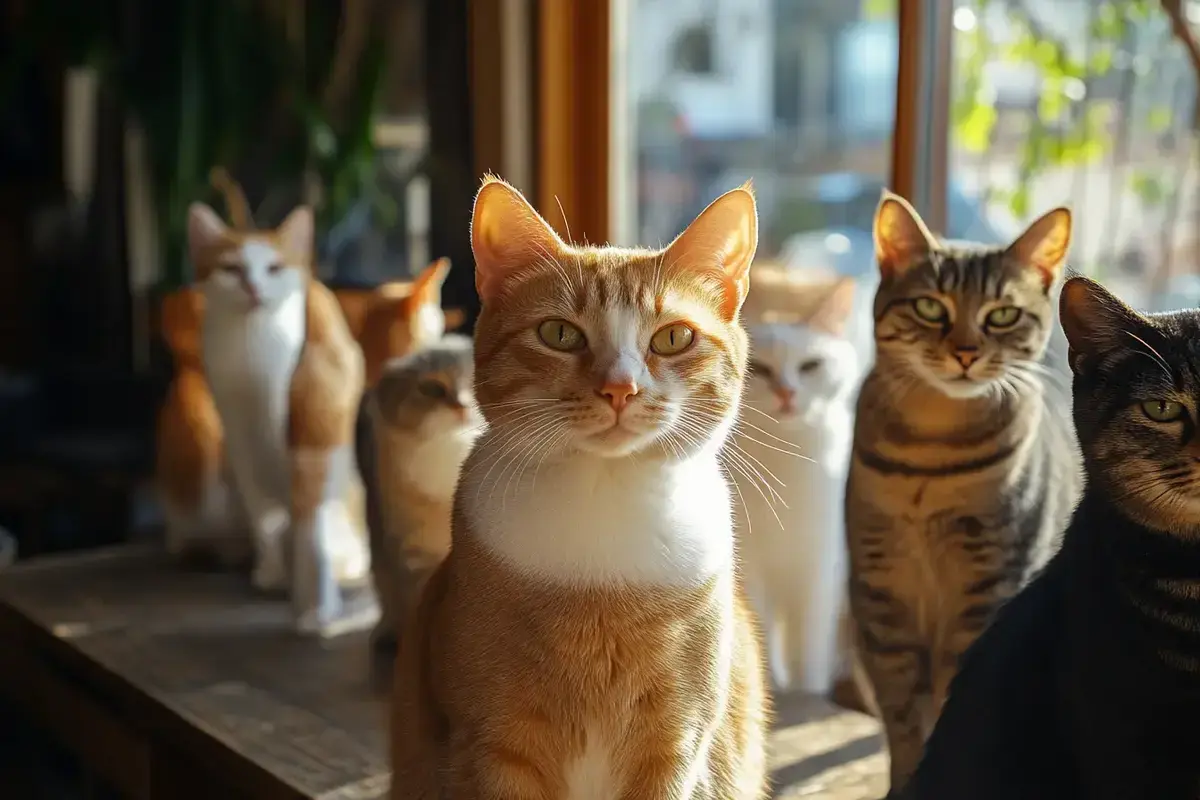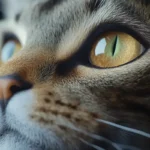Summary
- 🐾 A study identified 276 facial expressions in cats.
- 🔍 The study reveals a lack of previous research in the field of feline facial expressions.
- 📊 Methodology used: observing a colony of 50 cats in a cafe in Los Angeles.
- 📈 Potential use of the results to improve understanding of cat signals and strengthen the human-cat relationship.
Cat facial expressions, those mysterious manifestations of their emotions and intentions, are now a bit less enigmatic thanks to a recent study. This research not only cataloged up to 276 different expressions but also highlighted the importance of these subtleties for feline communication. By examining a colony of 50 cats in an unusual setting, a cafe in Los Angeles, the researchers opened new perspectives on understanding the complex signals our feline companions send us every day.
In-depth Exploration of Cat Facial Expressions
A team of researchers, whose efforts were published in the journal Behavioral Processes, conducted a thorough study of cat facial expressions. This research was motivated by the significant lack of previous studies in this specific field. The authors, including Brittany Florkiewicz and Georgia Mason, chose to meticulously analyze the behaviors of 50 cats residing in a bustling Los Angeles cafe, providing a natural and diverse environment for their observations.
Discovery of the Nuances of Feline Communication
The study revealed the existence of 276 distinct facial expressions in cats, a figure that underscores the complexity of their non-verbal communication. These expressions vary widely, ranging from subtle signals of contentment to clear signs of agitation or stress. The work also compared these expressions to those of dogs and humans, highlighting similarities and differences that could help better understand interspecies interactions.
Significance and Implications of the Findings
The results of this study are not just raw data; they offer valuable insights into how cats communicate with their environment. Understanding these subtle signals can transform our approach to cat care and interaction, promoting more harmonious and empathetic cohabitation. The researchers hope that these findings will encourage other scientists to further explore this still under-studied field.
Future Perspectives and Improvement of Human-Cat Relationships
In addition to laying the groundwork for future research, this study opens the door to immediate practical applications. Veterinarians, animal behaviorists, and cat owners can use this information to better address cats’ emotional and social needs. The ultimate goal is to improve cats’ quality of life and strengthen the bonds they form with humans, based on a deeper understanding of their ways of communicating.
Thanks to this study, the complexity of cat facial expressions is a bit less mysterious, promising to significantly improve how we interact with our feline companions. This advancement represents a significant step forward in understanding the emotional and social world of cats.







